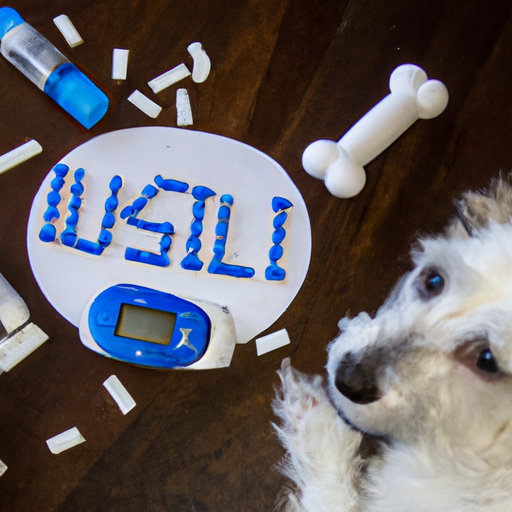As a caregiver, it’s crucial to keep an eye on the overall health of your furry friend. One common ailment that dogs can suffer from is diabetes. This article will provide you with an in-depth look at the signs of dog diabetes.
What is Diabetes in Dogs?
Just like humans, dogs can develop diabetes. Diabetes mellitus, the medical term for diabetes, is a disease of the pancreas. This small organ near the stomach produces insulin, which helps sugar (glucose) in the blood provide energy to the body’s cells. When a dog has diabetes, their pancreas either isn’t producing enough insulin, or their body is not using the insulin properly.
Types of Diabetes in Dogs
There are two main types of diabetes in dogs:
- Diabetes Mellitus (Type I and Type II)
- Diabetes Insipidus
Type I diabetes, or insulin-deficiency diabetes, is the most common type in dogs. This is when the body doesn’t produce enough insulin. Type II diabetes, or insulin-resistant diabetes, is when the body isn’t utilizing the insulin properly. Diabetes insipidus is less common and is related to water metabolism, not glucose.
Early Signs of Diabetes in Dogs
There are several early warning signs that your dog may be developing diabetes, including:
- Excessive thirst
- Increased urination
- Constant hunger, yet maintaining or losing weight
- Cloudy eyes (especially in dogs over 5 years old)
- Poor skin or coat condition
Advanced Signs of Diabetes in Dogs
As diabetes progresses, the signs can become more severe. These may include:
- Loss of appetite
- Lack of energy, lethargy
- Vomiting
- Cataracts or blindness
- Chronic skin infections
Risk Factors for Diabetes in Dogs
While any dog can develop diabetes, certain factors can increase the risk:
- Obesity
- Advanced age
- Gender (females are more likely to develop diabetes)
- Breed (certain breeds are predisposed)
- Other health issues, such as Cushing’s disease or pancreatitis
| Risk Factor | Explanation |
|---|---|
| Obesity | Excess fat can lead to insulin resistance. |
| Advanced Age | Older dogs are more likely to develop diabetes. |
| Gender | Female dogs, especially those who are unspayed, have higher risk. |
| Breed | Some breeds, like Samoyeds and Miniature Schnauzers, are more susceptible. |
Diagnosis and Treatment of Diabetes in Dogs
Diagnosis of diabetes in dogs involves a vet conducting a physical examination and running tests such as blood work and urine analysis. If your dog is diagnosed with diabetes, the treatment will typically involve insulin injections and dietary management.
Managing Your Dog’s Diabetes
With proper care and management, a dog with diabetes can live a healthy, happy life. This includes:
- Regular veterinary check-ups
- Feeding a consistent, balanced diet
- Regular exercise
- Monitoring your dog’s weight
- Administering insulin as directed
Frequently Asked Questions
Q1: Can diabetes in dogs be cured?
No, but it can be managed successfully with medication, diet, and lifestyle changes.
Q2: Can diabetes in dogs be prevented?
While there’s no guaranteed way to prevent diabetes, maintaining a healthy weight, regular exercise, and a balanced diet can reduce the risk.
Q3: Can a dog with diabetes live a normal life?
Absolutely. With proper management, a dog with diabetes can lead a full, active life.
Q4: What should I feed my diabetic dog?
A diet low in fat and high in fiber is often recommended. Your vet can provide specific dietary guidelines.
Remember, early detection and treatment of diabetes can significantly improve your dog’s quality of life. If you notice any of the signs mentioned above, please consult with a vet immediately. Your vigilance and care can make a world of difference to your furry friend.



